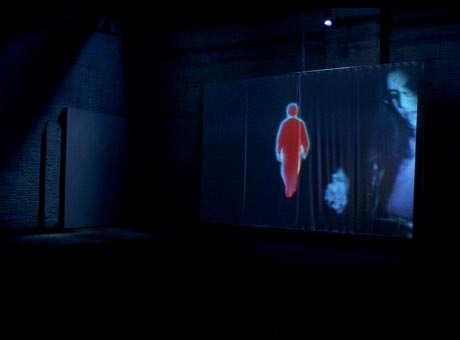Curated by Eva Diaz and Beth Stryker
Azra Aksamija, Jan Baracz, Center for Urban Pedagogy, Elizabeth Felicella, Stephen Hilger, neuroTransmitter, Kyong Park, Graham Parker, Marjetica Potrc, Michael Rakowitz, Doris Salcedo, Ines Schaber, Lise Skou and Lasse Lau, Sancho Silva and John Hawke, Alex Villar
Exhibition Dates: March 18 – April 30, 2006
Daytime Reception: March 18, 4-7pm
Mind the Gap examines the residual spaces of cities: spaces left over as a result of zoning, unclaimed spaces that are taken over for use by marginal communities, ‘dead zones’ deemed un- or underdeveloped by master planners who intend to take over common grounds, and the spaces between spaces that are the unintended by-products of urban and architectural design. This exhibition presents work by artists that considers these residual spaces and so-called ‘urban voids’ as places of particular interest, as sites for invention and do-it-yourself intervention. Through sculpture, photography, video, performance, and urban-scale architectural interventions, these projects amplify and animate the urban void as a space for renegotiating the increasing circumscription of the public sphere.
Recent debates in New York City and elsewhere about the governmental use of eminent domain in annexing public land for private use have pointed to the diminished public control over broad swaths of urban centers. The artists included in this exhibition exacerbate this tendency by occupying, altering, or otherwise testing the motivations and conflicting interests behind urban planning: they ask who formulates such plans and who benefits from them. Hosted by Smack Mellon Gallery in DUMBO, Brooklyn, Mind the Gap is located on one of many waterfront areas in which cycles of deindustrialization, blight, and gentrification— patterns in which “dead zones” feature prominently—have been enacted and challenged.Mind the Gap foregrounds such contestatory practices.
A free catalogue which includes essays by each of the curators will accompany the exhibition. Support for the exhibition is provided by the Graham Foundation for Advanced Studies in the Fine Arts and HSBC.
